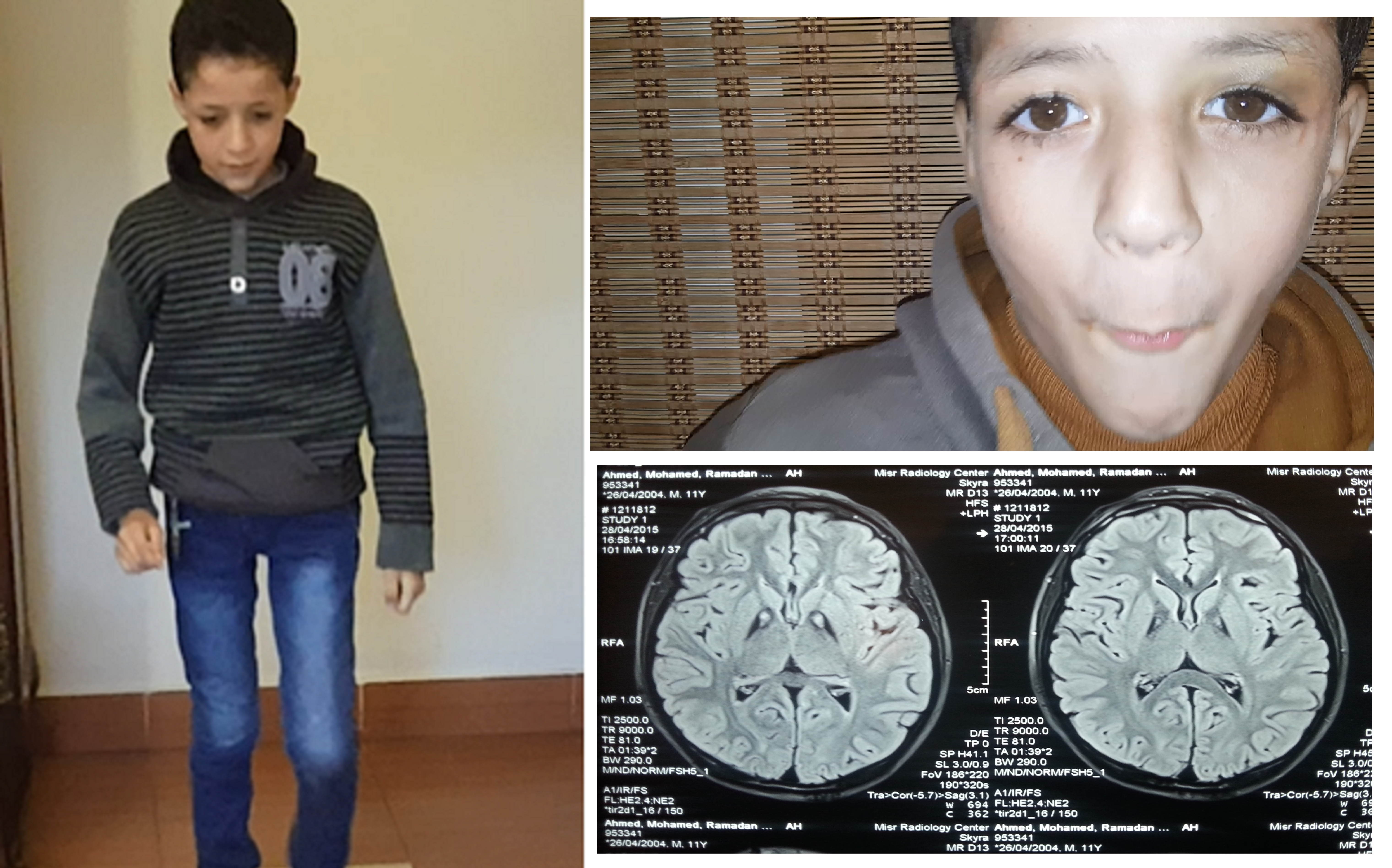Category: Pediatric Movement Disorders
Objective: The purpose of this case report and literature review is to increase the awareness of practicing clinicians regarding the mosaic clinical pattern this disease can manifest with in as close as members of the same family.
Background: Neurodegeneration with brain iron accumulation (NBIA) is a group of inherited neurologic disorders characterized by abnormal accumulation of iron in the basal ganglia (most often in the globus pallidus and/or substantia nigra). The hallmark clinical manifestations of NBIA are progressive dystonia and dysarthria, spasticity, parkinsonism, neuropsychiatric abnormalities, and optic atrophy or retinal degeneration. Initial clinical symptoms may vary greatly between affected individuals, but when this great phenotypic variation shows up in as close as two brothers, this should be worthwhile! NBIA disorders and their different initial clinical symptoms could trick the treating physician , hence the importance of clinical and imaging screening of family members of affectd individuals.
Method: Case report.
Results: A 12 years old male child came presenting to our outpatient clinic with severe painful generalized progressive dystonia resembling the opisthotonus position described in literature with intoxication. Patient was admitted, caregivers denied any history of intoxication and confirmed the gradual onset and progressive course nature of his illness. Routine labs as well as serum toxin levels and Serum Copper, 24 hours urinary copper, and serum ceruloplasmin were all negative. Brain imaging was typical of NBIA with eye of tiger sign. On meticulous history taking, his younger brother has been complaining of recent gait problems and severe dysphasia. His labs were also negative and brain MRI typcal of NBIA once again! They are now starting their treatment regimen and other family members are bring screened.
Conclusion: Clinical heterogeneity of neurodegeneration with brain iron accumulation (Hallervorden‐Spatz syndrome) and pantothenate kinase‐associated neurodegeneration syndrome can be very overt even in siblings and careful assessment of siblings of the patient and genetic screening is required.
References: 1) Schneider, S. A., Hardy, J., & Bhatia, K. P. (2012). Syndromes of neurodegeneration with brain iron accumulation (NBIA): an update on clinical presentations, histological and genetic underpinnings, and treatment considerations. Movement disorders, 27(1), 42-53. 2) Zarate, Y. A., Jones, J. R., Jones, M. A., Millan, F., Juusola, J., Vertino-Bell, A., … & Kruer, M. C. (2016). Lessons from a pair of siblings with BPAN. European Journal of Human Genetics, 24(7), 1080-1083. 3) Gunasekaran, K., Sivakumar, S., & Thiruvarutchelvan, K. (2019). Two siblings with atypical pantothenate-kinase-associated neurodegeneration. Neurology India, 67(3), 883.
To cite this abstract in AMA style:
N. Merghany, A. Al Hasany. Diverse Phenotypic Variations Among Siblings with NBIA: A Case Report and Review of Literature [abstract]. Mov Disord. 2020; 35 (suppl 1). https://www.mdsabstracts.org/abstract/diverse-phenotypic-variations-among-siblings-with-nbia-a-case-report-and-review-of-literature/. Accessed April 2, 2025.« Back to MDS Virtual Congress 2020
MDS Abstracts - https://www.mdsabstracts.org/abstract/diverse-phenotypic-variations-among-siblings-with-nbia-a-case-report-and-review-of-literature/


